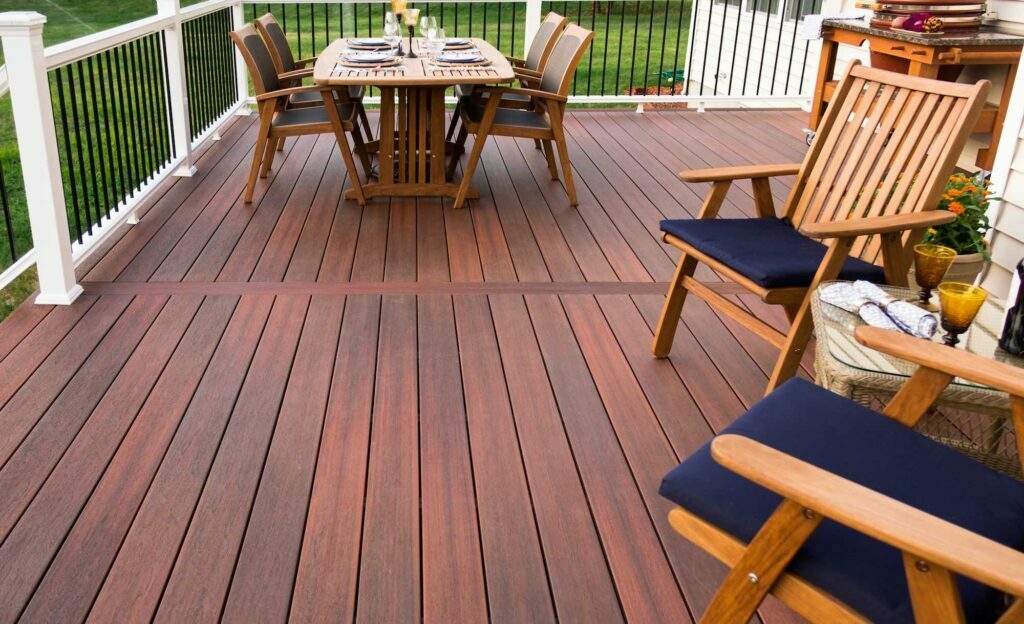
Composite decking is a modern alternative to traditional wood decking that’s been gaining traction by the day with its unique blend of strength, beauty, and sustainability. But what is composite timber decking exactly, and why is it causing such a stir?
Key takeaways
- Composite decking is a durable, low-maintenance material made from a combination of wood fibres and plastic.
- It offers long-term savings with minimal upkeep requirements while providing beautifully aesthetic options to suit any outdoor area.
- Plus, it’s an environmentally friendly choice due to its recycled content and sustainable forestry practices.
Understanding Composite Decking
Composite decking is a fantastic innovation in the world of outdoor spaces, offering a durable and attractive alternative to traditional timber. This type of decking is meticulously crafted from a combination of wood and plastic materials, ingeniously blending the strengths of both elements. The result is composite deck boards that mirror the beauty of natural wood but with the added resilience and virtually zero maintenance benefits of plastic. With composites, you get the best of both worlds – the aesthetics of timber and the practicality of a composite deck.
The composites we know and love today are often called ‘wood-plastic composites’, a term that perfectly encapsulates the unique fusion of materials at the heart of these products. This blend of materials gives composite decks an edge over traditional wood decks, offering enhanced durability, resistance to the weather, and a stunning visual appeal that stays fresh and vibrant for years.
For more, see The Best Composite Decking in Australia Just Keeps Getting Better.
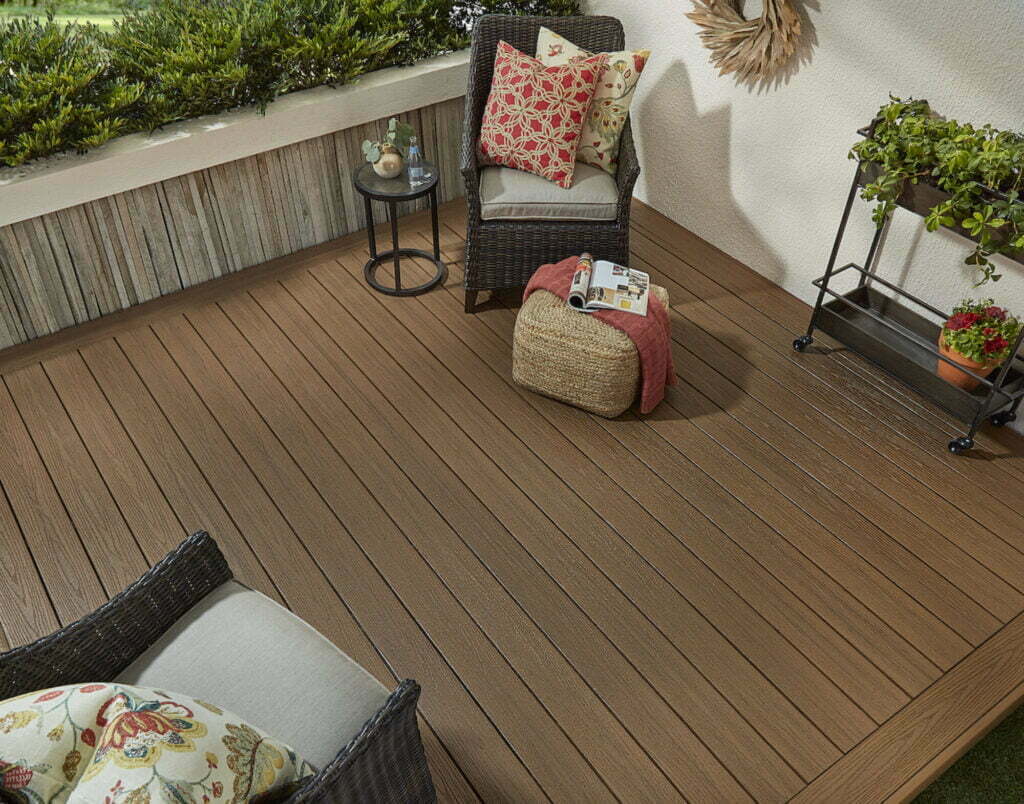
What is Composite Decking Made of?
At the core, composite decking contains the perfect mix of wood fibres and plastic materials. This combination results in a highly durable deck that stands the test of time and weather.
The wood component in these composite materials can come from sources such as sawdust, wood chips, or wood fibre pieces reclaimed from the building industry and saved from landfills. They are then combined with 98% recycled plastic into a homogeneous mixture. The result is a robust material that requires minimal maintenance and ensures your decking stands strong against the elements.
This is a crucial reason why capped composite decking makes such an incredible pool surround. It doesn’t succumb to chlorine and salt damage; it’s water resistant, anti-slip, and won’t splinter, leach colours, or tannins into the pool.
Learn more about why you should consider installing composite decking around your pool and see our post titled What is the Best Material to Use Around Your Pool?
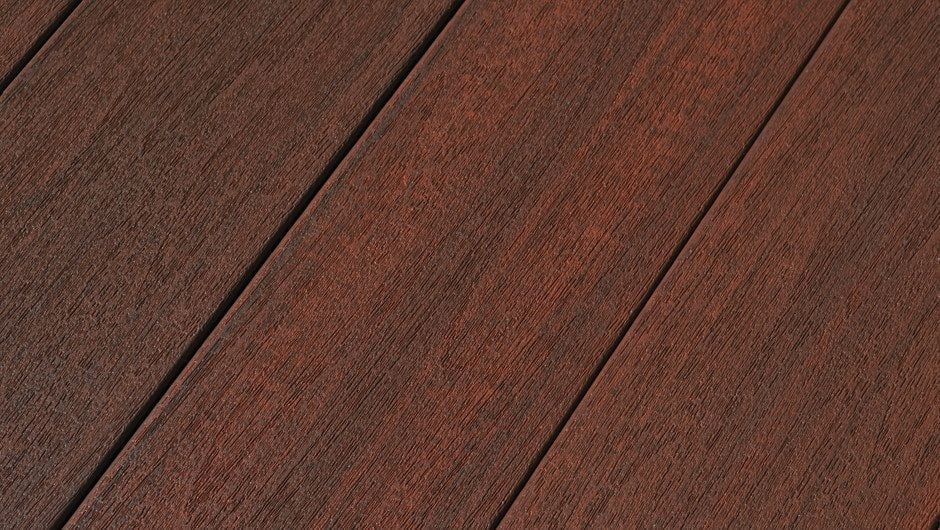
Composite Timber Manufacturing Process
The manufacturing process of capped composite decking is a marvel of modern technology. It begins with carefully blending timber fibres and plastic materials, either virgin or recycled. This mixture is then put through an extrusion process, where the mixture is heated until it’s pliable enough to be pushed through a die to form a specific shape. This is how our beloved composite boards take form, ready to be a part of a new deck or wall cladding.
The magic of this process lies in its ability to create a wood and plastic composite material that not only mimics the look of natural wood but also offers fantastic durability. The timber fibres provide the composite with a realistic density and feel underfoot, while the plastic adds strength and resistance to moisture, weathering, and fading. The result? A decking choice that looks and feels like natural wood but performs like a champ against the harsh Australian elements.
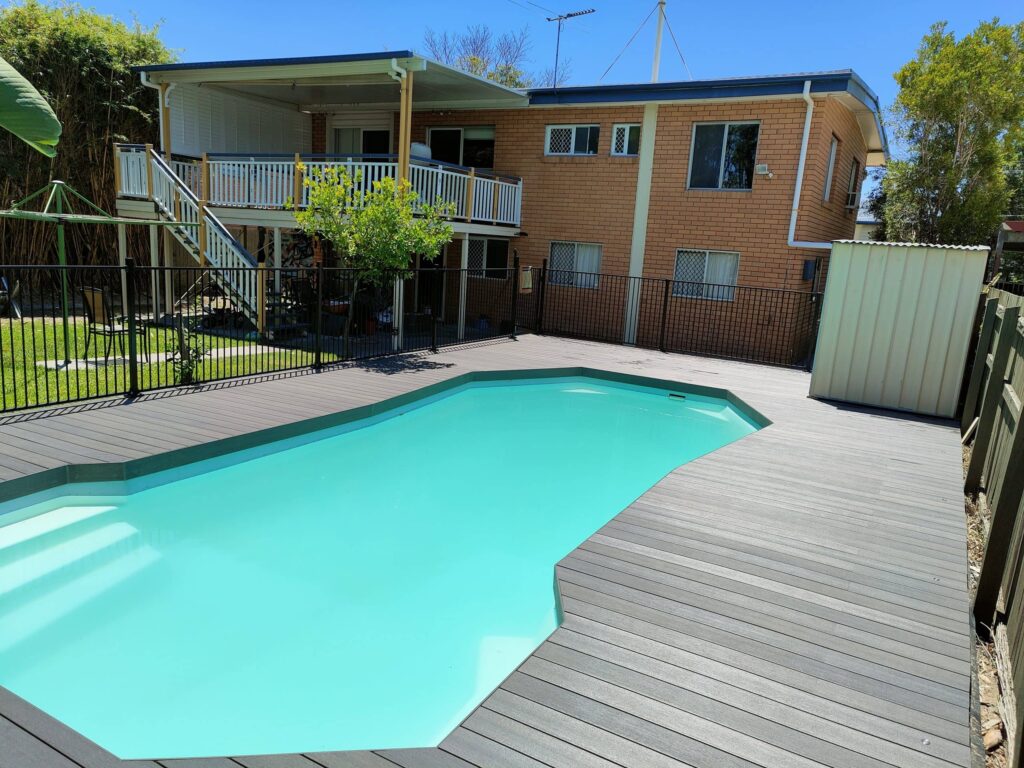
Advantages of Capped Composite Decking
Low Maintenance
Unlike traditional wood decks, capped composite decks require virtually no maintenance once installed. There’s no need for tedious sanding, staining, or sealing to keep your deck looking its best.
All you need to keep your composite deck in tip-top shape is an occasional scrub with soapy water. This ease of maintenance is a game-changer, allowing you to enjoy your outdoor space without the constant worry of upkeep. Plus, an easy-care deck means less time spent on chores and more time enjoying your outdoor oasis.
For more information, see Maintenance Free Decking – More Than Just a Dream.
Durability, Longevity & Safety
When it comes to durability and longevity, composites really shine. Thanks to its unique blend of wood and plastic, capped composite decking is highly resistant to moisture, weathering, and fading. This means that your deck will withstand the elements and maintain its beauty for years to come.
Plus, capped composites avoid common decking issues like splintering, warping, and insect damage. This product also has anti-slip properties, making it safe for young children and older adults.
For more information on the differences between timber and composite decking, see Composite decking vs Timber.
With a composite deck, you can rest easy knowing that your outdoor space is built to last and safe for your family and friends to enjoy.
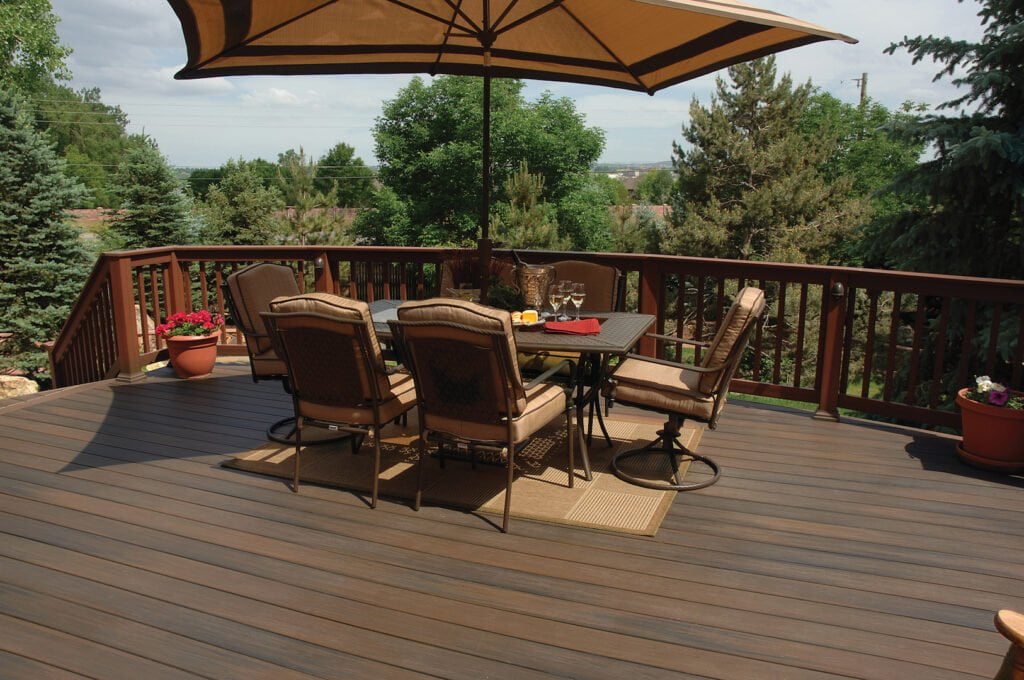
Beautiful Aesthetics
Whether you’re going for a classic look with rich, natural colours or a modern aesthetic with bold, vibrant hues, there is a choice of composite timber for you. Plus, the realistic grain patterns mimic the appearance of real wood, adding a touch of natural beauty to your outdoor space.
Our most popular colours in the Select Capped Composite range include:
- Spotted Gum
- Jarrah
- Graphite
The Escapes Capped Composite colours range includes:
- Blackbutt
- White Oak
The colours available in the Good Life Composite range are:
- Cottage
- Cabin
Finally, the Xtreme Capped Composite Decking colour choices include:
- Acorn
- Aspen
For more information, see our collection of composite decking boards or click the following link to download our latest Decking and Cladding Guide for 2023.
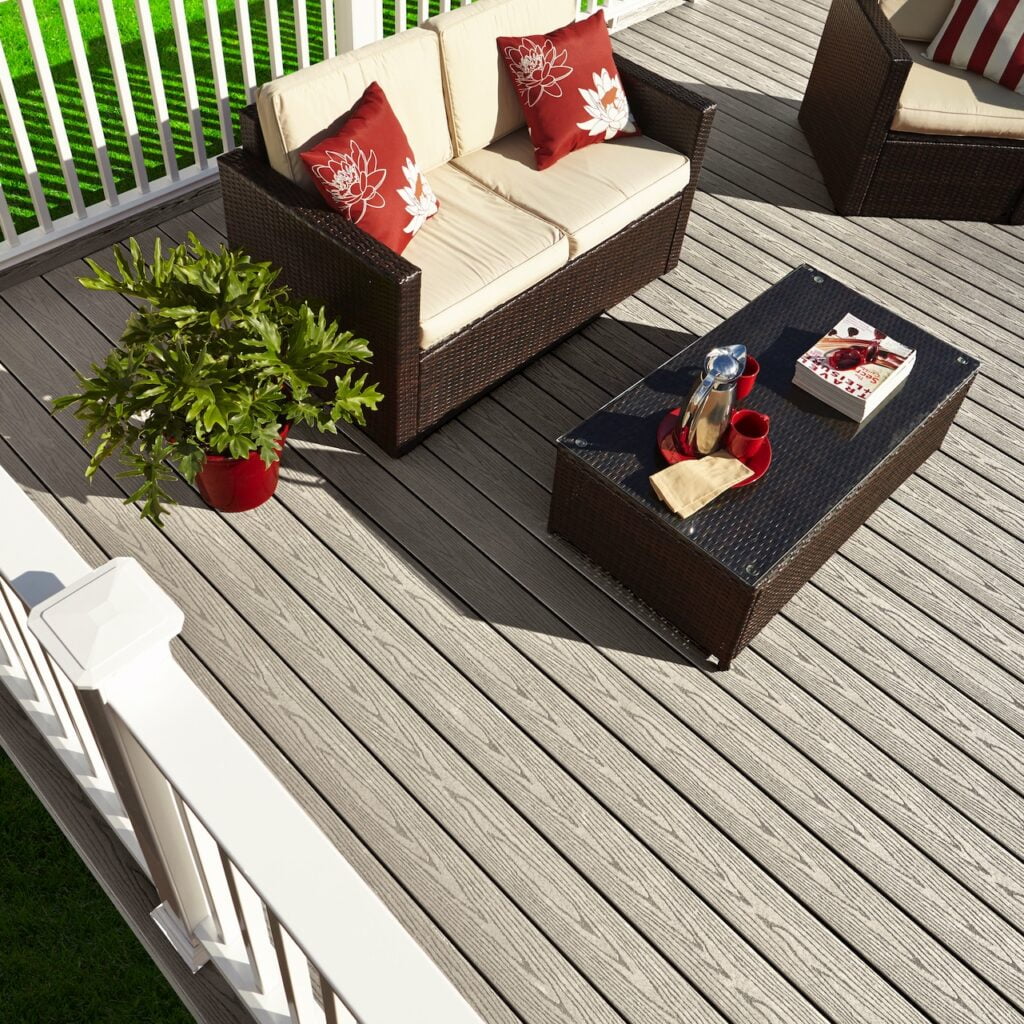
Potential Drawbacks of Composite Decking
Initial Cost
Composite decking, while a superb long-term investment, comes with a higher initial cost than traditional wood decking. This is mainly due to the advanced technology and materials used in its construction.
However, it’s essential to consider the bigger picture. While the upfront cost may be higher, the long-term savings are significant. With minimal maintenance requirements and exceptional longevity, the overall cost of owning a composite deck can be lower than that of a traditional wood deck.
You can use our Composite Decking Price Calculator to help estimate the cost of your project. You may also be interested in our post covering the topic of cheap composite decking boards.
Limited Refinishing Options
Unlike wood, composite decking material cannot be sanded back or refinished once installed. While this contributes to its zero maintenance appeal, it also means that you have fewer options if you wish to change the look of your deck down the line.
However, most capped composite manufacturers offer a wide range of colours and styles, so you can likely find a design you love right from the start. Plus, the colour stability of capped composite timber ensures that your deck maintains its appearance for years to come.
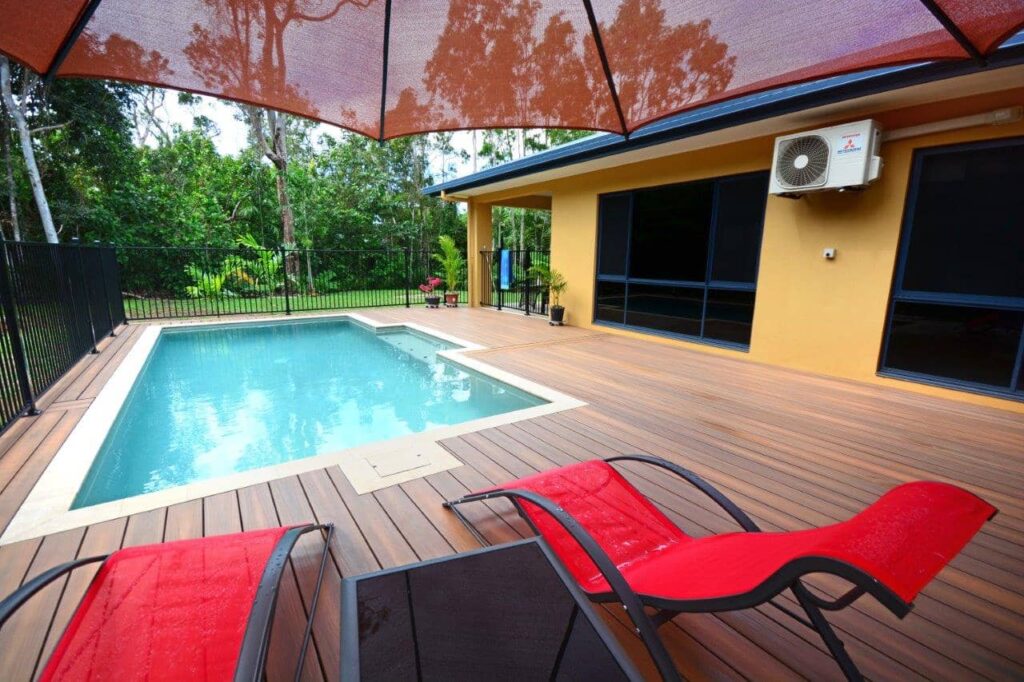
Environmental Benefits of Composite Decking
Composite decking isn’t just an excellent choice for your outdoor space; it’s also a great choice for the planet. Thanks to its use of recycled materials and sustainable forestry practices, composite decking helps to reduce waste and conserve resources.
From the recycled timber fibres and plastics used in its construction to the sustainable forestry practices employed in its production, composite decking embodies an environmentally conscious approach that we can all feel good about. So let’s delve deeper into the eco-friendly aspects of composite decking.
A Great Use of Recycled Material
One of the key environmental benefits of composite decking is its use of recycled materials. Many composite products contain a significant proportion of recycled wood and plastics. This not only reduces the demand for virgin materials but also helps to divert significant waste from landfills.
The recycled content in composite decking typically ranges from around 60% to 95%. This means that when you choose composite decking, you’re not just getting a beautiful and durable deck – you’re also positively impacting the environment.
Sustainable Forestry Practices
In addition to using recycled material, composite decking also promotes sustainable forestry practices. This involves managing and harvesting forests in a way that prioritises responsible resource management, such as replanting trees after harvesting and reducing the amount of timber harvested.
By supporting sustainable forestry practices, composite decking helps ensure that our forests are managed in a way that benefits the decking industry and the planet. So when you choose composite decking, you’re not just building a deck – you’re helping to build a more sustainable future.
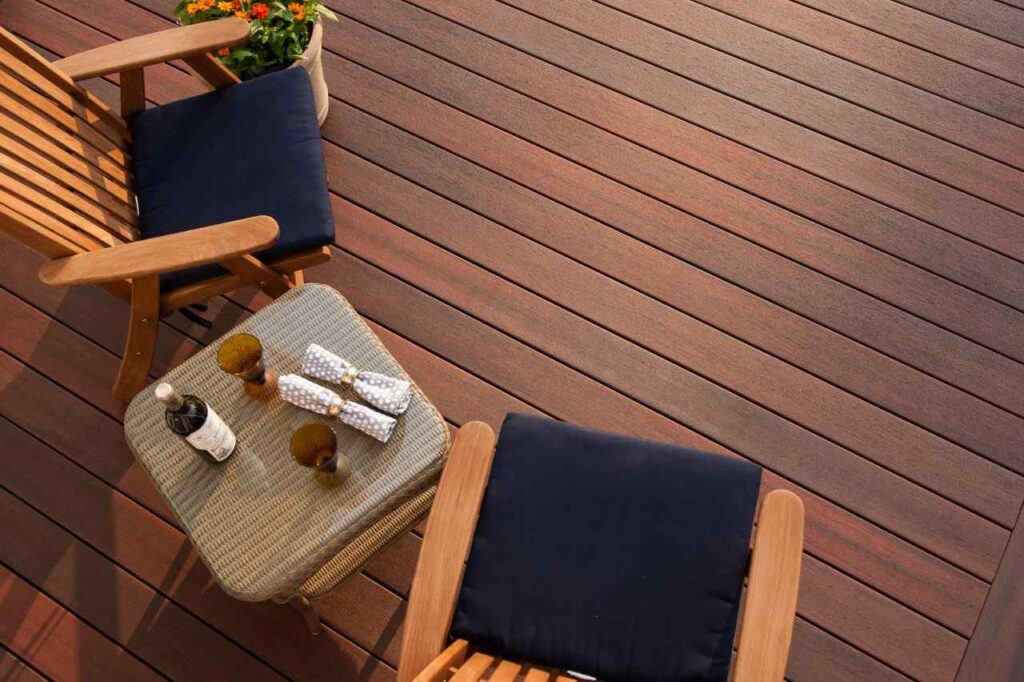
Summary
Composite decking offers a compelling alternative to traditional wood decking, blending strength, beauty, and sustainability in one package. Its longevity and aesthetic appeal make it a perfect choice for any outdoor space. While it may have a higher upfront cost, the long-term savings and benefits make it a worthwhile investment. Plus, its use of recycled material and sustainable forestry practices means it’s a choice you can feel good about. So why wait? Start planning your dream deck today!
Frequently Asked Questions
What is the difference between timber decking and composite decking?
Wood decking requires regular painting and sealing to prevent damage from insects and rodents, whereas composite decking is designed to resist such damage without additional maintenance.
Is composite better than wood for decking?
Composite decking is more durable and resistant to pests than wood, making it an excellent choice for long-lasting outdoor space.
It is also easier to maintain than wood, as it does not require regular staining or sealing. It is also more resistant to fading and warping, making it an excellent choice for those looking for an easy-care outdoor space.
You can see our guide to Wood vs Composite if you would like more.
How long does a composite deck last?
Composite decks have a lifespan of 30-50 years, depending on installation and care.
Our flagship Select Capped Composite Decking product has the industry’s first 50-year Fade and Stain Warranty and Lifetime Performance Guarantee.
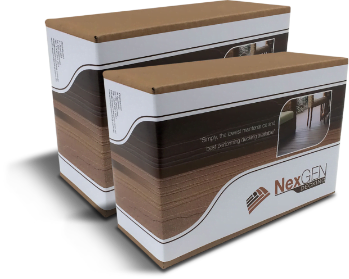
DO YOU WANT A
FREE SAMPLE PACK?
Can’t decide on a colour?
Fill out the form, and we’ll express post your free samples box of our composite boards to you ASAP!
LET’S GET STARTED
ON YOUR PROJECT
Contact us to kick things off. This will be more fun than you think!
Products
Gallery
Contact
Direct Office Numbers
Adelaide – (08) 6316 0469
Brisbane – (07) 3041 6065
Melbourne – (03) 8672 6444
Sydney – (02) 8072 6220
